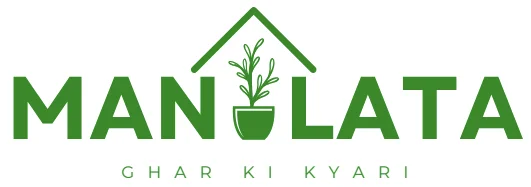Research
I started online, of course. Lots of good articles out there:
Good list of ten things to try from OnTime Supplies (though what’s up with coffee grounds?!?)
Wikihow had two neat-looking tutorials, but none of them looked practical for use on a ton of big-ass whiteboards.
Lots of great first-hand accounts from ThriftyFun. Though I’m not sure I want to use abrasives like toothpaste or Scotch Brite (paid link) on my beautiful new babies.
I started putting together a list, then decided I was just raid my basement and test whatever I had on hand. I’ve accumulated quite the collection of treatments, lubricants, and waxes from various projects.
I came up with nine contenders for the test. Here’s group 1:
clean whiteboards treatments group 1
And group 2:
clean whiteboards treatments group 2
How I tested
I decided to do two rounds of clean whiteboards testing.
In round 1, I would:
Split my wall into 10 groups (9 treatments and 1 control with no treatment)
Treat each slice with a different treatment
Erase the board at various points in time (after 1 hour, after 3 hours, etc.) to see which held up best.
In round 2, I would take my finalists and do a long-term ghosting test.
Round 1: Nine Treatments for Clean Whiteboards
Here’s the grid I set up. The left side had the waxes, the control, and one of the goopy lubes.
clean whiteboards left grid
The right side had lubricant sprays and car waxes:
clean whiteboards right grid
They were all applied according to the label instructions. The lubricant sprays were just sprayed on, and then smeared around with a paper towel until the surface was dry.
Sealing and Cleaning a Whiteboard with Waxes
The first to drop out were the non-car waxes. Cheng Countertop Wax (paid link) and Paste Finishing Wax (paid link) are amazing for our DIY concrete countertops. Whiteboard treatments, though? Not so much.
You can see here that they left a smeary mess when I tried to erase the whiteboard after just one hour.
clean whiteboards waxes
I’m kind of glad, as these were on the more difficult side to apply. Lots of rubbing on and smearing off, then waiting, then buffing.
Two down, seven to go.
Sealing and Cleaning a Whiteboard with Grease
Next to fall – our two grease entries. We use Super Lube (paid link) as a bike chain grease, and this food-safe petrol jelly (paid link) is left over from a meat slicer experiment gone horribly wrong.
These were a smeary mess to apply, and the markers could barely write on them. They were also a mess after erasing after just one hour:
clean whiteboards grease
Two more down, which leaves five.
Sealing and Cleaning a Whiteboard with Car Waxes
A friend I rate very highly suggested Turtle Wax as the solution, so I was excited about this test. I was testing Nu Finish Paste (paid link) and Turtle Wax Carnauba Cleaner Paste Wax. (paid link)
These were much easier to apply than the other waxes or the greases, which was nice.
However, I found that the whiteboard markers didn’t write particularly well on them. In general, they did no better or worse than the control in leaving marks.
Here’s what my control looked like when I erased after 1, 2, and 6 hours:
clean whiteboard control
And here’s what the car waxes looked like after one, two, and six hours:
clean whiteboard car waxes
About the same level of whiteboard ghosting.
With two more out, that leaves us with three treatments — all spray-on lubricants.
Spray-On Lubricants for Clean Whiteboards
I was down to three finalists. Picture the old, grizzled gunslinger taking on two recent graduates from UofT Austin. One lives in the Brooklyn, the other is a Silicon Valley techrepreneur:
WD-40, (paid link) the old-timer
Teflon spray, (paid link) the hipster
Teflon Silicone Spray, (paid link) the techie from Silicon Valley
I had high hopes for the Silicone spray, as did the super helpful guy at the local hardware store.
First, a word on smell.
This group of treatments smells.
WD-40 (paid link) has the familiar shop-class-meets-your-father’s-garage smell. It’s distinctive, though not unpleasant.
The Teflon spray (paid link) had a smell like electrified coconuts.
I don’t have a clever description for the Teflon Silicone Spray (paid link) — it also had a scent.
Let’s see how they did.
It’s a little hard to see in this photo, but the newfangled Teflon Silicone Spray (paid link) was the poorest performer of the three. After three days of testing, it definitely had the most ghosting of these three finalists:
clean whiteboards three finalists
Let’s take our finalists and move on to Test 2!
Sealing and Cleaning Whiteboards: WD-40 vs. Teflon
This second test was a torture test. I took another wall, treated it, and then attacked it with every whiteboard marker in my arsenal:
clean whiteboards final attack
I let it sit for two days, then erased it:
clean whiteboards finalist round 1
You can already see the ghosting on the control in the middle, but the WD-40 and Teflon are still going strong.
I then repeated this cycle two more times — I left the marker on for two days, erased it, and tried again.
The final test
Here’s what my plain control looked like (heavy whiteboard ghosting):
clean whiteboards final control
And the Teflon (light whiteboard ghosting):
clean whiteboards finalist teflon
And the WD-40 (clean whiteboards!):
clean whiteboards winner
